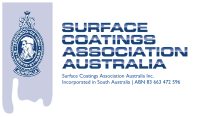Presenters Name: Thomas Clayton
Employment Title: Discipline Lead – Specialised Marine Coatings
Company: Defence Science & Technology Group
Biography: Thomas is Discipline Leader of Specialty Marine Coatings at Defence Science and Technology Group, leading a team that provides coatings solutions and advice to the Royal Australian Navy. His main interests lie in the evaluation of new coatings technologies; formulation of specialised Defence coatings; trial and inspection of coating systems applied to Defence platforms; and collaborating with Defence and industry stakeholders to achieve improved outcomes for Defence. In 2019, Thomas completed a 12 month secondment to the Naval Research Laboratory in Washington DC where he investigated the relationship between permeability and adhesion of high build tank coatings. Thomas has a Bachelor of Applied Science (Honours) and also holds a number industry specific qualifications including the SCAA Certificate of Surface Coatings Technology, NACE Coating Inspector Level 2 and SCAA Professional Grade of Associate.
Presentation Title: Heat Induction Coating Removal – RAN Trial
Presentation Abstract: Replacement of coatings on Royal Australian Navy (RAN) vessels due to coating breakdown and corrosion, accounts for a significant proportion of overall maintenance activities. New technologies that can reduce the time and cost penalties associated with coating and corrosion maintenance work are highly sought after. One potential technology is heat induction coating removal. Heat induction coating removal uses the principles of induction heating to rapidly heat coated steel substrates and disbond adhered coating. The technology is marketed as being faster, cleaner and safer than traditional coating removal methods such as abrasive blasting.


